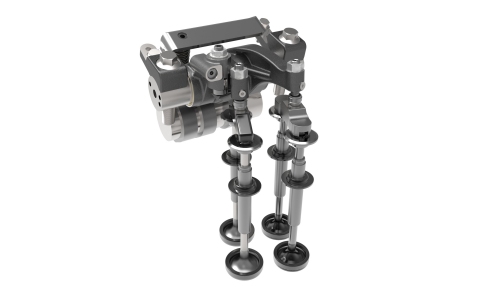Power management company Eaton today announced its Vehicle Group has introduced a complete portfolio of variable valve actuation (VVA) technologies to help commercial vehicle manufacturers meet forthcoming emissions regulations in China. The regulations are expected to be significantly more stringent than current standards.
This press release features multimedia. View the full release here: https://www.businesswire.com/news/home/20211202005043/en/

Eaton’s variable valve actuation (VVA) technologies help commercial vehicle manufacturers meet looming emissions regulations. (Photo: Business Wire)
“Automakers that manufacture vehicles for the China market are researching how to achieve future emissions regulations,” said Fabiano Contarin, product director, Commercial Vehicle Valvetrain, Eaton’s Vehicle Group. “Eaton is the right partner to support this effort because of our considerable experience helping European and U.S. auto and truck makers develop emissions-reducing technologies."
Eaton’s VVA solutions are based on two building blocks: 1) a rocker with a switchable capsule, and 2) a split rocker for full deactivation. By combining these two building blocks, several VVA strategies can be utilized in virtually any engine architecture – single and dual overhead cam, as well as cam-in-block engines – and engine displacement ranging from 2.0 liters to 15.0 liters.
Vehicle Group’s CDA technology lowers CO2 and NOx simultaneously
Cylinder deactivation (CDA) is a VVA technology that involves deactivating the intake and exhaust valve opening, as well as the fuel injection on some cylinders when an engine is running at low load. This increases the temperature of the exhaust gases, allowing the nitrogen oxide (NOx) aftertreatment to remain efficient at low load and decrease carbon dioxide (CO2) emissions.
CDA is an ideal solution for commercial vehicles that make frequent stops, such as sanitation or delivery trucks. It decreases both NOx and CO2 simultaneously, making it more efficient than other technologies that cut NOx at the expense of increased CO2. CDA can reduce NOx by more than 40% and CO2 by 5%-8%.
Late intake valve closing technology reduces emissions
Eaton also offers Late Intake Valve Closing (LIVC), which delays the closing of the intake valve, so the effective compression ratio is lower than the expansion ratio. LIVC increases the thermal efficiency of the engine, improving fuel economy and reducing CO2 emissions. Reducing the amount of airflow through the engine with a shorter intake stroke raises the exhaust temperature by 40 degrees Celsius, contributing to the thermal management of the aftertreatment. Overall, LIVC can reduce CO2 by 1%-2%, and is most efficient for applications such as over-the-road trucks.
Eaton’s mission is to improve the quality of life and the environment through the use of power management technologies and services. We provide sustainable solutions that help our customers effectively manage electrical, hydraulic, and mechanical power – more safely, more efficiently, and more reliably. Eaton’s 2020 revenues were $17.9 billion, and we sell products to customers in more than 175 countries. We have approximately 85,000 employees. For more information, visit www.eaton.com
View source version on businesswire.com: https://www.businesswire.com/news/home/20211202005043/en/
Contacts
Thomas Nellenbach
thomasjnellenbach@eaton.com
(216) 333-2876 (cell)













